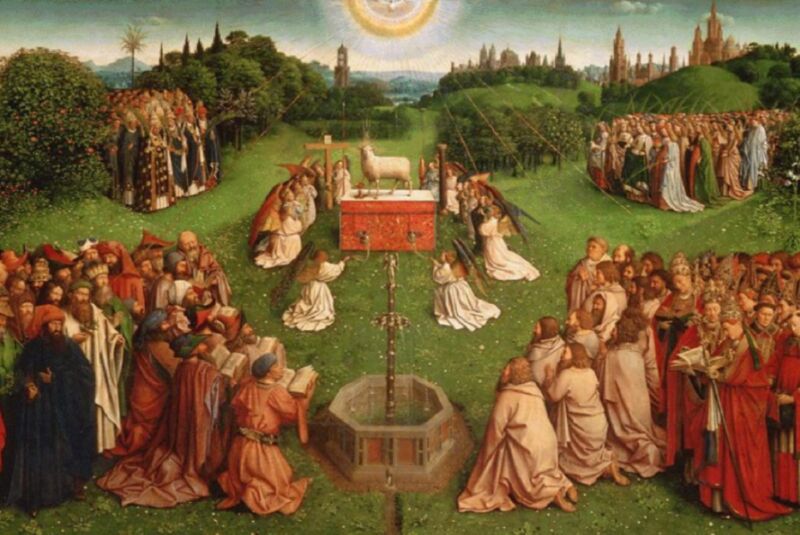We can see the true face of Van Eyck Lamb of God after latest restoration

Enlarge / The central Adoration of the Mystic Lamb panel. The groupings of figures are, from top left anti-clockwise: the male martyrs, the pagan writers and Jewish prophets, the male saints, and the female martyrs. (credit: Public domain/Wikimedia Commons)
Over the last eight years, conservationists have been meticulously restoring the famed Ghent altarpiece housed in Belgium's St Bavo's Cathedral. With the help of several advanced imaging techniques, they've been able to identify where overpainting from earlier restorations obscured the original work. Researchers at the University of Antwerp and the National Gallery of Art in Washington, DC, have published a new paper in the journal Science Advances demonstrating how combining different techniques greatly improved their analysis, revealing previously unknown revisions to the Lamb of God figure in the inner central panel.
The Ghent Altarpiece—aka the Adoration of the Mystic Lamb—is a 15th-century polyptych attributed to brothers Hubert and Jan van Eyck. Originally consisting of 12 panels, the altarpiece features two "wings" of four panels each, painted on both sides. Those wings were opened on church feast days so congregants could view the interior four central panels. The inner upper register features Christ the King, the Virgin Mary, and John the Baptist, flanked by the outer panels depicting angels and the figures of Adam and Eve. The inner lower register depicts John the Baptist and St. John the Evangelist. The Adoration of the Lamb comprises the center panel, featuring the Lamb of God standing on an altar in a meadow surrounded by angels, with groups of martyrs, saints, and prophets congregating around the altar.
The first significant restoration was done in 1550 to repair damage from an earlier cleaning. It was cleaned again in 1662 by the Flemish painter Antoon van den Heuvel. After the altarpiece was damaged while being stored in Austrian mines during World War II, another restoration was done in the 1950s, making use of X-ray radiography (XRR) to aid in those efforts. Specifically, the researchers imaged tiny paint samples from the cross section of the altarpiece, yielding useful information about areas that had been over-painted during the earlier restoration, obscuring the original Eyckian work—including the Lamb's head.
Read 11 remaining paragraphs | Comments
from Gaming & Culture – Ars Technica https://ift.tt/3hHFv7s